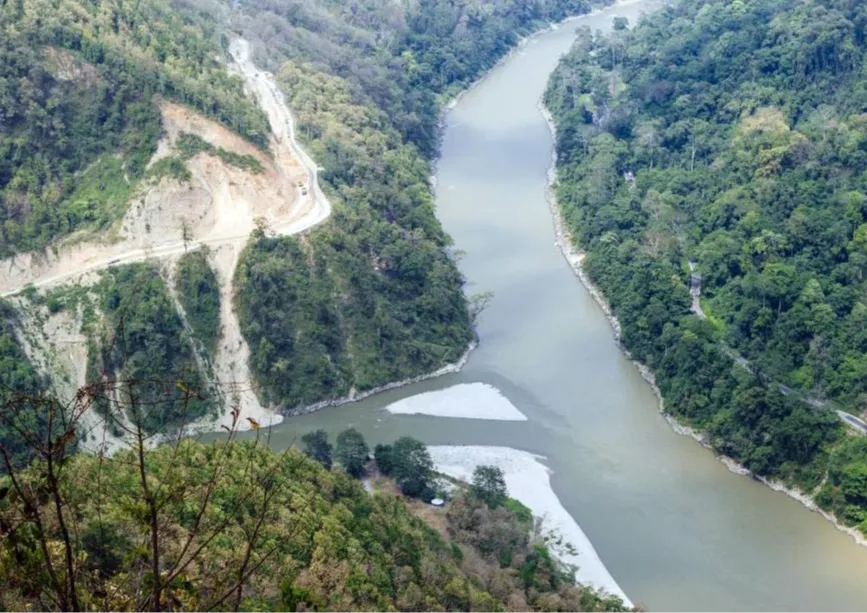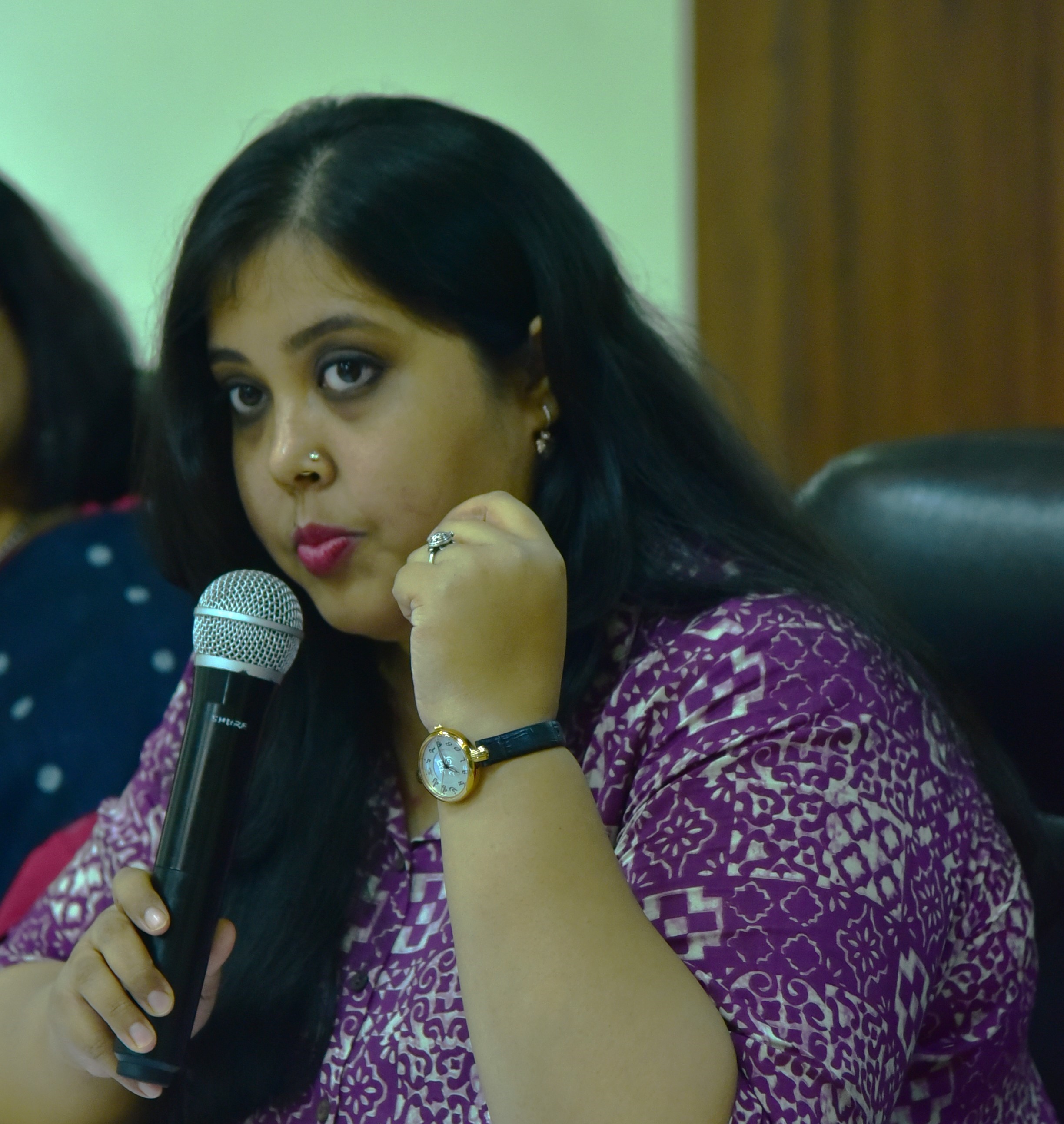-
CENTRES
Progammes & Centres
Location
The Teesta issue poses unique challenges to both India and Bangladesh. The growing involvement of China adds a geopolitical dimension to this problem

Less than a month after the 12th Bangladesh parliamentary election, the Chinese ambassador to Bangladesh, Yao Wen, convened with the newly appointed Foreign Minister Hasan Mahmud on 28 January 2024. During the meeting, he invited Bangladesh Prime Minister Sheikh Hasina to visit China to promote mutual understanding and enhance bilateral cooperation. While the invitation and its acceptance are both predictable given the robust relationship between the two countries, Beijing’s repeated articulation of its support in ‘opposing external interference in Bangladesh’, is noteworthy. Chinese Premiere Xi Jinping made its first iteration in the pre-election period when he vouched that China would stand by PM Hasina in resisting outside pressures, as the United States (US) continually imposed censures to ensure ‘democratic polls’. Since the past year, a marked disdain has become perceptible in US-Bangladesh relations over this issue, with Hasina calling out the US for human rights violations within its territory and the US expressing concern over irregularities in the Dhaka election. In such a scenario, speculations are increasing about China’s closer engagement with Bangladesh to fill a possible American vacuum, and the impact this will have on Dhaka’s ties with New Delhi.
Chinese Premiere Xi Jinping made its first iteration in the pre-election period when he vouched that China would stand by PM Hasina in resisting outside pressures, as the United States (US) continually imposed censures to ensure ‘democratic polls’.
In recent years, China’s assertive rise in the countries of South Asia has concerned India about Beijing’s growing influence in its neighbourhood. As the second-largest economy in South Asia, with a geographical position overlooking important shipping routes and substantial hydrocarbon reserves in the Bay of Bengal, Bangladesh is a coveted partner for China. For India, Bangladesh is important as its immediate eastern neighbour with which it shares the world’s fifth longest border. Consequently, India and China are proactively nurturing ties with Dhaka across domains and in the process contributing to its foreign revenue, on which the country relies primarily for its development and prosperity. China is Bangladesh’s largest trade partner, third-largest source of Foreign Direct Investment (FDI), and its second-largest provider of foreign aid. India, on the other hand, is Dhaka’s second-largest trading partner, is ranked among its top 10 sources of FDI, and is its third-largest contributor of bilateral foreign assistance from non-aid group countries. Foreign assistance to Bangladesh is essentially of three types: food aid, commodity aid, and project aid. Of these, the third category is the most popular amongst its developmental partners, as constructing the necessary infrastructure allows these countries to not only strengthen diplomatic linkages with Dhaka but also to tap into its considerable commercial, geopolitical, and resource potential. Thus, a major chunk of the assistance provided by the two Asian giants to Bangladesh is directed towards building development infrastructure.
India and China are proactively nurturing ties with Dhaka across domains and in the process contributing to its foreign revenue, on which the country relies primarily for its development and prosperity.
In recent years, the Sino-Indian competition that has become one of the geopolitical hallmarks of the Indian Ocean region has also found its reflection in some of these projects. For example, in 2016, China agreed to develop 27 projects in Bangladesh, one of which was Bangladesh’s second-largest seaport at Mongla. However, finances were not forthcoming from Beijing until December 2022, when China declared its funding, within days of India appointing Egis India Consulting Engineers for its development project in the port. The Mongla Port Authority maintains that the two projects are separate as Beijing’s funds are allocated for building two container terminals and delivery yards, and New Delhi’s investment is for constructing jetties, roads, parking lots, offices, and a residential complex. The quick successive announcements hint at the geopolitical competition.
In another earlier instance, Bangladesh had cancelled China’s plans to finance the development of a deep-sea port at Sonadia, reportedly due to India’s discomfort about Beijing’s growing presence in the Bay of Bengal. Dhaka officially based its decision on a study which warned of the negative impact the construction of the port would have on the environment and instead focused on developing the Matarbari Port with Japan and the Payra deep-sea port with several countries, including India. Beyond these specific instances, it has also been argued that while Beijing has built many bridges in deltaic Bangladesh, it has shelved those which would enhance the country’s connectivity with India, although the geopolitical competition has certainly not been cited as a reason for scrapping these projects. Chinese investments in building the barrage over the Teesta River can be interpreted as the latest iteration of this competition.
India and Bangladesh share 54 transboundary rivers, one of which is the Teesta. Flowing southwards through the hilly Indian states of Sikkim and northern West Bengal, it enters Bangladesh through the Rangpur Division. Teesta is Bangladesh’s fourth largest river and the main river for its northern territories and is thus crucial for its agricultural requirements, supporting over 10 million people and 14 percent of the country’s total crop production. However, according to Bangladesh experts, the dams that India has constructed on its side of this river constrain the flow of water upstream, affecting its discharge into the neighbouring country, thereby impairing the irrigation of over 100,000 hectares of land. They proffer that Bangladesh requires a flow of 5,000 cusecs (cubic feet per second) of water, which was adequately met with 6,710 cusecs flowing into the country before the dams were built. However, it receives only 1,200-1,500 cusecs during the dry season, dropping to 200-300 cusecs at times.
Naturally, this has been a continuing strain on the otherwise flourishing bilateral ties between India and Bangladesh. Although an ad hoc arrangement was reached at the 25th Joint River Commission (JRC) meeting in 1983 by which Bangladesh would receive 36 percent of Teesta’s waters, it remained unfulfilled. Subsequently, another agreement was reached in 2011, under which Bangladesh would receive 37.5 percent of the water, and India would get 42.5 percent, but it was not signed due to objections raised by the Chief Minister of West Bengal, Mamata Banerjee, citing the overall decline in the flow of the river. Indeed, with the Teesta Barrage Project at Gajoldoba in West Bengal diverting water via the Teesta-Mahananda irrigation canal to meet growing urban water requirements of Siliguri and Jalpaiguri, feeding paddy fields and almost 30 hydropower projects operational in the Teesta stretch of Sikkim, water flow has reduced. Consequently, the Teesta issue has become embroiled in Centre-State politics within India, especially since rivers fall under the state’s purview in the Indian Constitution. This has made it difficult for the Indian government to address the issue and arrive at a solution which would be acceptable to all the involved stakeholders and thus, no headways have been made so far, despite repeated discussions between India and Bangladesh on the issue.
The Teesta issue has become embroiled in Centre-State politics within India, especially since rivers fall under the state’s purview in the Indian Constitution.
In March 2023, India’s decision to build two more canals to divert the water of Teesta resurfaced the issue. Reportedly, the construction would violate India’s commitment at the 37th meeting of the JRC in 2010 to not construct any major structure for water diversion upstream of (the Gajoldoba) barrage except for minor irrigation schemes, drinking water supply, and industrial use. Dhaka, thus, prepared to send a protest letter to New Delhi, but the issue was sidelined with electoral dynamics taking centre stage since late last year. However, it is to be noted that in 2022 Bangladesh began working with China to build a multipurpose barrage and dredge and embank portions of the Teesta to form a single manageable channel where the water level would be much higher. Teesta is important to China as a part of its Belt and Road Initiative as Bangladesh is a member. However, the work on the project was stalled due to India’s apprehensions that it would not only bring China within 100 km of its border but also close to its narrow Siliguri corridor—the country’s only land link with its politically sensitive Northeast region. Nonetheless, China hopes that work will be resumed soon.
In a geopolitical climate conditioned by Sino-Indian competition, it has been imperative for Bangladesh to adopt a ‘diplomacy of balance’ in its engagement with both countries. The stalled Teesta project represents one such instance of diplomacy which has been further amplified by Dhaka’s yet another recent attempt to negotiate with India on this issue. Shortly after his meeting with the Chinese ambassador, Bangladesh’s Foreign Affairs Minister met the Indian Minister for External Affairs S. Jaishankar in New Delhi. Amongst other topics, the Teesta Water Sharing Agreement was broached and Mahmud expressed his optimism that the issue would be resolved soon after India’s upcoming parliamentary election.
he stalled Teesta project represents one such instance of diplomacy which has been further amplified by Dhaka’s yet another recent attempt to negotiate with India on this issue.
The Teesta issue is a persistent irritation, posing unique challenges to both India and Bangladesh and affecting the national interests of both countries. Its pending resolution is therefore not for want of strong bilateral relations but because there are national complications which need to be resolved before such an agreement can be reached. As neighbouring countries, India and Bangladesh have a history of protracted disputes which were settled peacefully such as the Maritime Boundary Agreement settled in 43 years, the Land Boundary Agreement in 44 years and the Ganga Water Sharing Agreement in 25 years. However, the involvement of China in the Teesta issue and the possibility of Beijing’s increased presence in post-election Bangladesh, adds a geopolitical dimension to the issue for India. Prioritising the Teesta issue would thus not only assuage India’s concerns but also preserve its goodwill in Bangladesh.
Sohini Bose is an Associate Fellow at the Observer Research Foundation
Anasua Basu Ray Chaudhury is a Senior Fellow at the Observer Research Foundation
The views expressed above belong to the author(s). ORF research and analyses now available on Telegram! Click here to access our curated content — blogs, longforms and interviews.

Sohini Bose is an Associate Fellow at Observer Research Foundation (ORF), Kolkata with the Strategic Studies Programme. Her area of research is India’s eastern maritime ...
Read More +
Anasua Basu Ray Chaudhury is Senior Fellow with ORF’s Neighbourhood Initiative. She is the Editor, ORF Bangla. She specialises in regional and sub-regional cooperation in ...
Read More +